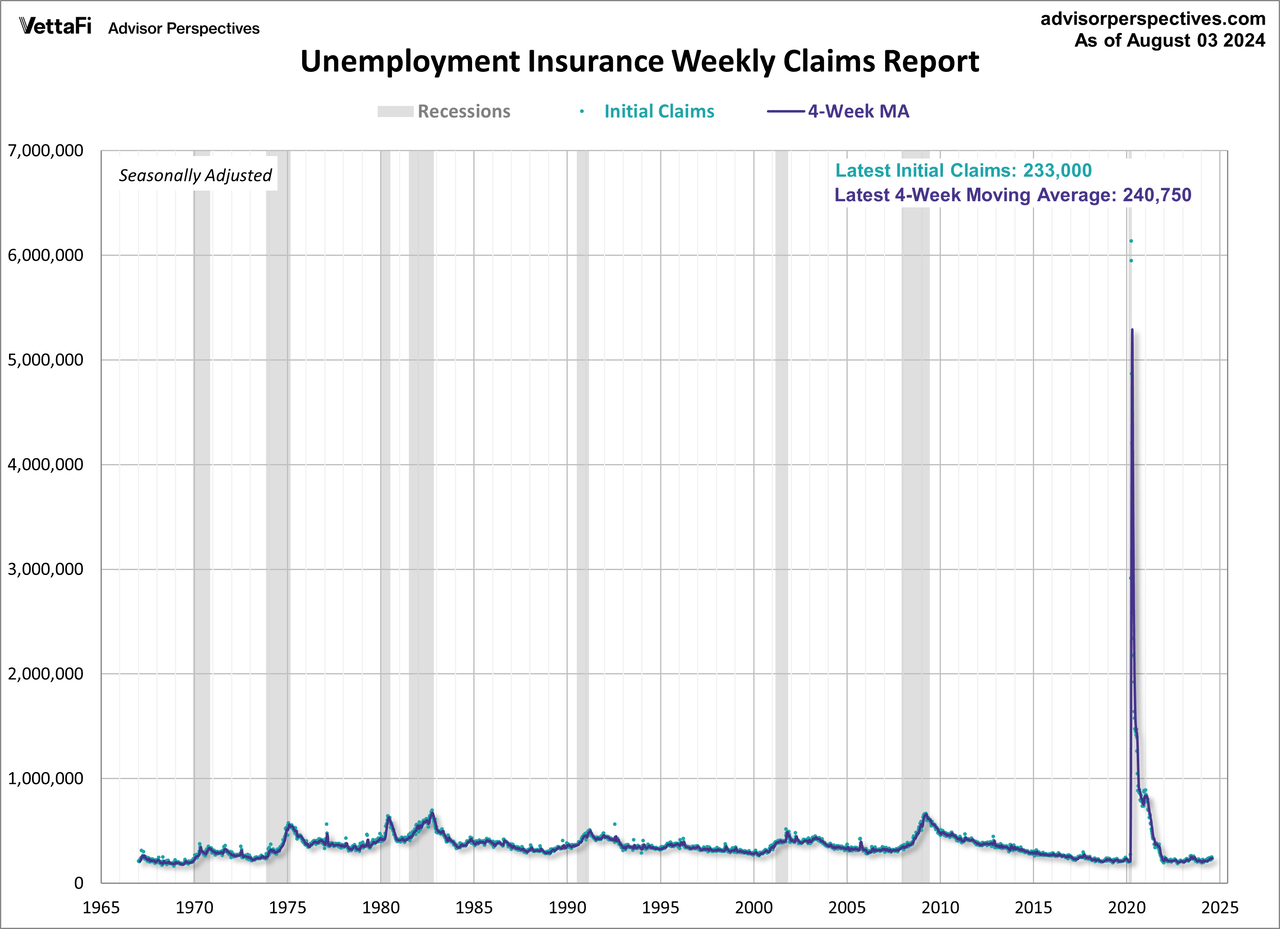Initial jobless claims measures the number of individuals who filed for unemployment insurance for the first time during the past week. In the week ending August 3rd, initial jobless claims were at a seasonally adjusted level of 233,000. This represents a decrease of 17,000 from the previous week’s figure and is lower than the forecast of 241,000 jobless claims.
Here is the opening statement from the Department of Labor:
In the week ending August 3, the advance figure for seasonally adjusted initial claims was 233,000, a decrease of 17,000 from the previous week’s revised level. The previous week’s level was revised up by 1,000 from 249,000 to 250,000. The 4-week moving average was 240,750, an increase of 2,500 from the previous week’s revised average. The previous week’s average was revised up by 250 from 238,000 to 238,250.
The advance seasonally adjusted insured unemployment rate was 1.2 percent for the week ending July 27, unchanged from the previous week’s unrevised rate. The advance number for seasonally adjusted insured unemployment during the week ending July 27 was 1,875,000, an increase of 6,000 from the previous week’s revised level. This is the highest level for insured unemployment since November 27, 2021 when it was 1,878,000. The previous week’s level was revised down by 8,000 from 1,877,000 to 1,869,000. The 4-week moving average was 1,862,000, an increase of 7,000 from the previous week’s revised average. This is the highest level for this average since November 27, 2021 when it was 1,928,000. The previous week’s average was revised down by 2,000 from 1,857,000 to 1,855,000.
Here is a closer look at the series since 2007, with a callout to the past 12 months. The four-week moving average, which gives a clearer sense of the overall trend, is currently at 240,750. This is an increase of 2,500 from the previous week’s figure and the highest level in almost a year.

For an even shorter timeline, the chart below shows initial unemployment claims starting in 2022.

As we can see, there’s a good bit of volatility in this indicator, which is why the four-week moving average is a more useful number than the weekly data. Here is the complete data series dating back to 1967.

Outside of the COVID spike, initial unemployment claims have never been greater than 700,000 for a given week. With that said, we’ve adjusted the y-axis on the chart below so that we can get a zoomed in view of the series where the COVID spike isn’t as prominent.
Notice the relationship between recessions and the rise in weekly unemployment claims. To no surprise, the 4-week moving average begins to rise at or before the start of a recession and reaches a relative peak at the end of a recession.

The headline unemployment insurance data is seasonally adjusted, as are the charts above. What does the non-seasonally adjusted data look like? See the chart below, which clearly shows the extreme volatility of the non-adjusted data (the green dots). The four-week MA gives an indication of the recurring pattern of seasonal change (note, for example, those regular January spikes).

Again, in this next chart, we’ve adjusted the y-axis to get a zoomed in view of the series where the COVID spike isn’t as prominent.

Because of the extreme volatility of the non-adjusted weekly data, we can add a 52-week moving average to give a better sense of the secular trends. The chart below also has a linear regression through the data (red line), which we are currently below.

Original Post
Editor’s Note: The summary bullets for this article were chosen by Seeking Alpha editors.
Read the full article here













